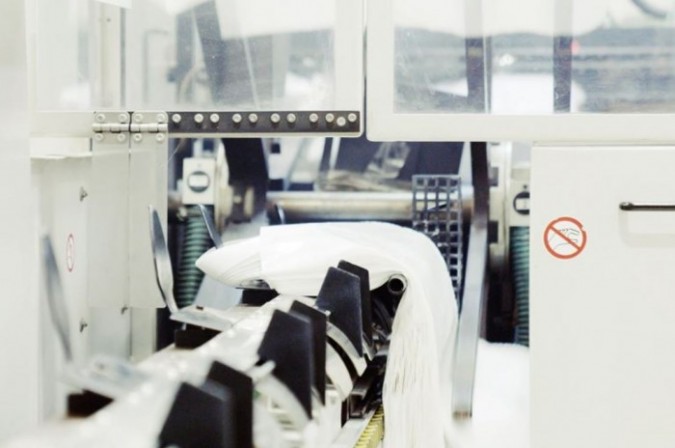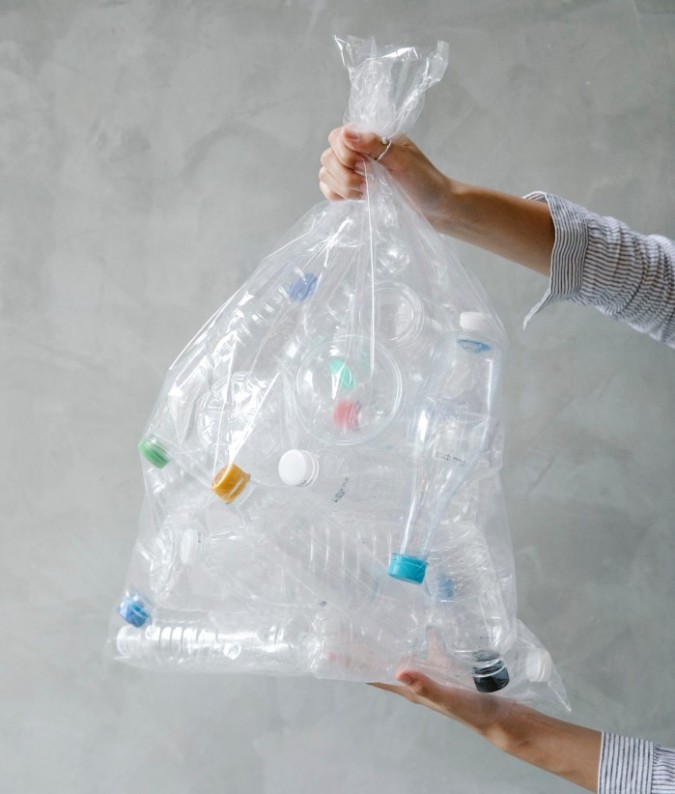The story of pre- or post-consumer waste in plastic packaging
Pre vs post-consumer waste : what's the difference?
Let's start by explaining the difference between pre and post-consumer waste. The word itself reveals quite a bit, as we are talking about pre-consumer waste and post-consumer waste.
- Pre-consumer waste is waste collected after production but before it reaches the end customer. So it is made from waste from the manufacturer that for some reason never reached the consumer. A great example to clarify this a bit more is the following. When making a tote bag, there are scraps left over, think of cutting waste from plastic to arrive at a nice straight bag. Manufacturers reprocess those scraps into something new. In this way, they ensure that any kind of residual waste is eliminated.
- Post-consumer waste is waste collected after the end customer has consumed the product. Plastic blister packs that end up in the PMD bag are a good example. So here we are actually talking about all PMD waste that is taken away to a sorting facility. The sorted materials are then shipped off to recycling companies, which in turn make new raw materials from them.

The pros and cons of pre-consumer waste
The origin of pre-consumer waste is 100% verifiable, so you know for sure which material is used. This has enormous advantages especially in the area of food safety, as you can give certainty and guarantees here. When using pre consumer waste, you maintain the transparency of the packaging, as well as its quality. You can easily go to a 100% recyclate. In addition, you avoid extra waste streams at the source and do not have to deal with an aggravating transport issue.
A disadvantage often assigned to pre consumer waste is that it is not really a recycled product, as it does not contribute substantially to the solution of post-consumer waste. Consumers are less likely to make the link to a recycled product because it is not waste that comes out of their hands, i.e. it has not yet gone through a full cycle from raw material to a final product that is sorted at end of life.

The pros and cons of post-consumer waste
With post-consumer waste, the situation is different. Post-consumer waste materials are eligible for recycling after use by consumers. At the end of a product's life, the waste is, normally, left for the recycling process. That way you reduce the growing mountain of waste and reduce the amount of waste that can end up in the ocean, for example. So it's much closer to what consumers understand a recycled product to be.
But every advantage has its disadvantage. Because this is by default a combination of different waste materials, you almost never end up with transparent packaging. This is because a lot of plastic packaging is thrown together, and that packaging often contains prints in different colors. In addition, you cannot go to 100% post-consumer recycled material to manufacture packaging. You always need some virgin material to ensure the quality of the final product. Despite the use of virgin material, the final product will be less transparent and strong than when pre-consumer waste is used. Also, you can't just use this packaging for direct contact with food, medicine, etc. The reason? You cannot trace the origin of the material. Here, an analysis must be done on the material before we want to make food packaging from it again. Finally, the post-consumer waste has to be collected and transported. That transport usually goes abroad to have it re-granulated. So there are additional transport flows coming up to take the recycled material back to the original manufacturers, because locally we still cannot process these flows sufficiently. But where does that leave us in terms of carbon footprint?
Conclusion
That we are already moving in the right direction to deploy environmentally friendly alternatives to plastic is certain. If we ask ourselves what is more sustainable, we are currently getting a little closer to post-consumer waste. Because this is how we can best reduce the existing mountain of waste. However, it is necessary to always weigh the pros and cons against each other. Only then will we continue to work towards a sustainable model in which we optimize our used materials and strive for a fully circular economy.